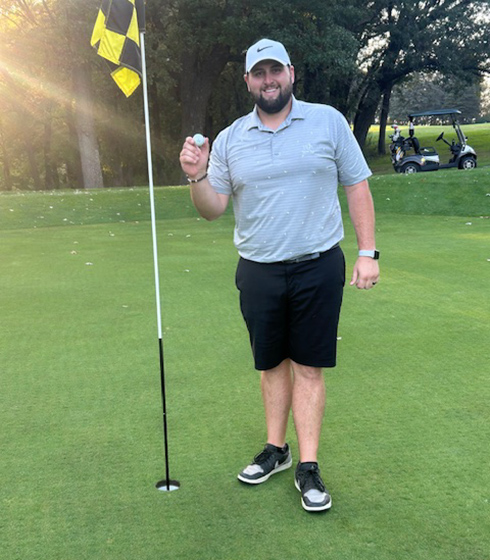Report on Wichita’s Proposed Water Conservation Strategy and Alignment with Sustainable Development Goals
The city of Wichita is evaluating new water conservation policies to be implemented following the conclusion of Stage 2 drought restrictions. This strategic planning directly supports the United Nations Sustainable Development Goals (SDGs), particularly those concerning water management, sustainable communities, and responsible consumption.
Proposed Post-Drought Water Management Plan
City leadership is considering a permanent, structured approach to outdoor water usage to foster long-term conservation. This initiative is a critical step towards achieving SDG 6 (Clean Water and Sanitation) by ensuring the sustainable management of freshwater resources. The proposed schedule is as follows:
- Even-numbered addresses: Permitted to water on Mondays, Wednesdays, and Fridays.
- Odd-numbered addresses: Permitted to water on Tuesdays, Thursdays, and Saturdays.
Rationale and Contribution to SDG 12
The proposed every-other-day model is based on successful implementation in other municipalities. Mayor Lily Wu highlighted the case of Oklahoma City, which has maintained a similar conservation model since 2013, demonstrating its effectiveness. Adopting this best practice aligns with SDG 12 (Responsible Consumption and Production) by promoting efficient use of natural resources and encouraging sustainable consumption patterns among residents. This policy framework institutionalizes water conservation as a standard civic practice rather than a temporary emergency measure.
Enhancing Urban Resilience and Meeting SDG 6 & SDG 11 Targets
To further bolster the city’s resilience against future water scarcity, a key concern of SDG 11 (Sustainable Cities and Communities), Public Works Director Gary Janzen has put forth a significant recommendation. He advises that Stage 2 restrictions should remain in effect until the 12-month average water level at Cheney Lake surpasses 90 percent.
This represents a substantial increase from the 70 percent threshold currently outlined in the city’s drought response plan. This more conservative approach demonstrates a profound commitment to the targets of SDG 6, specifically Target 6.4, which aims to substantially increase water-use efficiency and ensure sustainable freshwater withdrawals to address water scarcity.
Summary of Contributions to Sustainable Development Goals
The proposed policies by the City of Wichita actively contribute to a global sustainability agenda:
- SDG 6: Clean Water and Sanitation: The plan directly addresses the need for sustainable water management and increases water-use efficiency to combat scarcity.
- SDG 11: Sustainable Cities and Communities: By proactively managing its primary water reservoir and implementing conservation measures, Wichita is building a more resilient and sustainable urban environment capable of withstanding climate-related challenges like drought.
- SDG 12: Responsible Consumption and Production: The watering schedule encourages citizens to adopt more responsible water consumption habits, contributing to the overall sustainable management of a vital natural resource.
1. Which SDGs are addressed or connected to the issues highlighted in the article?
-
SDG 6: Clean Water and Sanitation
The entire article is focused on the management of water resources in the city of Wichita. It discusses measures to conserve water due to drought conditions, which directly relates to ensuring the availability and sustainable management of water, the core objective of SDG 6.
2. What specific targets under those SDGs can be identified based on the article’s content?
-
Target 6.4: By 2030, substantially increase water-use efficiency across all sectors and ensure sustainable withdrawals and supply of freshwater to address water scarcity.
The proposed plan for Wichita to allow outdoor watering only on specific days based on address numbers is a direct measure aimed at increasing water-use efficiency among residents. The article mentions that a similar model in Oklahoma City has “seen some improvement in conservation,” which aligns with the goal of increasing efficiency to address water scarcity caused by drought.
-
Target 6.5: By 2030, implement integrated water resources management at all levels.
The article refers to the city’s “drought response plan” and the discussion among city leaders, including the mayor and the public works director, on how to manage water resources. This process of creating and adjusting rules based on environmental conditions (like lake levels) is a form of integrated water resources management at the local (city) level.
3. Are there any indicators mentioned or implied in the article that can be used to measure progress towards the identified targets?
-
Indicator for Target 6.4: Improvement in Conservation
The article implies an indicator for water-use efficiency by referencing the success of a similar plan in Oklahoma City, which has “seen some improvement in conservation.” While not a formal UN indicator, within the context of the article, the level of “conservation” or the reduction in water consumption would be the key metric to measure the success of the new watering schedule. This measures the change in water use efficiency.
-
Indicator for Target 6.5: Water Level at Cheney Lake
A specific, measurable indicator for the city’s water resource management plan is explicitly mentioned. The Public Works Director recommends that Stage 2 restrictions should not be lifted until “the 12-month average water level at Cheney Lake gets above 90 percent.” This percentage serves as a direct indicator used by the city to guide its drought response and manage its primary water resource.
4. Table of SDGs, Targets, and Indicators
| SDGs | Targets | Indicators |
|---|---|---|
| SDG 6: Clean Water and Sanitation | 6.4: Substantially increase water-use efficiency across all sectors and ensure sustainable withdrawals and supply of freshwater to address water scarcity. | Implied: “Improvement in conservation” through the implementation of an every-other-day watering schedule. |
| SDG 6: Clean Water and Sanitation | 6.5: Implement integrated water resources management at all levels. | Explicit: The “12-month average water level at Cheney Lake,” with a proposed threshold of 90% to guide the city’s drought response plan. |
Source: kwch.com







